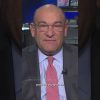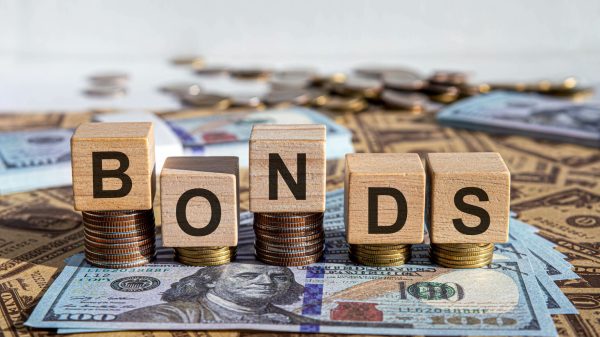Stocks traded lower Wednesday as markets were rattled by a lowering of the U.S. government’s credit rating by Fitch Ratings, while bond yields rose when the Treasury boosted the size of its debt sales, though data from ADP showed that the labor market is still quite strong.
How are stocks trading
-
The Dow Jones Industrial Average
DJIA
declined 260 points, or 0.7% to 35,369 -
The S&P 500
SPX
fell 54 points, or 1.2% to 4,521 -
The Nasdaq Composite
COMP
dropped 299 points, or 2.1% to 13,987
On Tuesday, the Dow Jones Industrial Average rose 71 points, or 0.2%, to 35631, the S&P 500 declined 12 points, or 0.27%, to 4577, and the Nasdaq Composite dropped 62 points, or 0.43%, to 14284.
What’s driving markets
U.S. stocks fell on Wednesday as a broad risk-off sentiment returned following weeks of rally fueled by the euphoria around artificial intelligence and hopes that the U.S. economy can avoid a recession as inflation falls.
Late Tuesday the rating agency Fitch lowered the U.S.’s credit rating from AAA to AA+, citing “expected fiscal deterioration” and an “erosion of governance”.
The decision serves up an extra dose of uneasiness among investors already concerned about the risks of a recession as a result of the Federal Reserve’s monetary tightening, and whether this year’s stock-market rally still has room to run.
Fitch’s decision followed a similar move by S&P Global Ratings in 2011 after a previous fight in Congress over raising the debt ceiling. The U.S. Treasury market acts as a global benchmark upon which many financial products are based and so uncertainty about its stability can cause anxiety for investors.
See: Fitch cuts U.S. credit rating: Here’s what you need to know
The news found a stock market arguably vulnerable to unwelcome surprises, with the S&P 500 index having already gained nearly 18% this year and the tech-heavy Nasdaq Composite up 34%. However, the S&P 500 on Wednesday is on pace for its largest one-day point and percentage decline since April 25, while the Nasdaq is on track for its largest one-day point drop since December 15, 2022, according to Dow Jones Market Data.
The CBOE VIX Index, an option-based gauge of expected S&P 500 volatility, jumped 16% to 16.2, the highest level since May 31, according to FactSet data.
“Markets will take some time to digest the news,” said Frank Lietke, executive director and president at Ally Invest Securities.
However, he said he doesn’t expect the lowering to cause the stock market much long-term damage. “We’ve seen this before,” Lietke said. “This alone won’t be enough to put significant downward pressure on stocks.”
Also earlier Wednesday, the U.S. Treasury published its August refunding statement. It said it is offering $103 billion of Treasury securities to refund about $84 billion of privately-held Treasury notes and bonds maturing in mid-August. The issuance will raise new cash from private investors of around $19 billion.
“Wall Street can’t ignore what is happening with fixed income as Treasury yields surge after the Treasury had to increase the size of their planned quarterly sale of longer-term debt for the first time in over 2 ½ years,” noted Edward Moya, senior analyst at Oanda, in a note.
The yield on the 30-year Treasury
BX:TMUBMUSD30Y
rose 7 basis points to 4.175% from 4.104% late Tuesday. Tuesday’s level was the highest since Nov. 9, according to Dow Jones Market Data. The yield on the 10-year Treasury
BX:TMUBMUSD10Y
advanced 5 basis points to 4.093% from 4.048% Tuesday afternoon.
See also: ‘Eye-popping’ $1 trillion third-quarter borrowing need from U.S. Treasury raises risk of buyers’ fatigue
The second-quarter earnings reporting season continued to roll on with results Wednesday including CVS Health
CVS,
Humana
HUM,
and Carlyle Group
CG,
before the opening bell, followed after the close by PayPal
PYPL,
Shopify
SHOP,
and Qualcomm
QCOM,
Sophie Lund-Yates, lead equity analyst at Hargreaves Lansdown, said “the market remains sensitive as the final throes of earnings season rumble on, but 82% of S&P 500 companies that have reported results so far have surprised to the upside, offering a bit of a sentiment buffer.”
In U.S. economic data, private-sector employment rose by 324,000 in July, payroll processor ADP said, in a sign that businesses continue to hire in response to steady economic growth. Economists polled by the Wall Street Journal had forecast a gain of 175,000. In its revised figures for June, ADP said 455,000 new jobs were created instead of the initially reported 497,000.
“The ADP report is favorable for the economy’s prospects of securing a soft landing, meaning inflation returning to the Fed’s target without a large downturn,” according to Bill Adams, Chief Economist for Comerica Bank.
“To do that, the economy needs to cool enough that labor demand and supply come better into alignment, but not so much that job losses at employers that are cutting back overwhelm the effect of hiring at employers that are still expanding.”
Companies in focus
-
Advanced Micro Devices Inc.
AMD,
-6.85%
fell 6.9% Wednesday after the chipmaker beat on earnings, and a forecast a bounce back in its PC chip business. -
Starbucks Corp.
SBUX,
+1.93%
rose 2.6% even though the coffee chain reported third-quarter same-store sales that missed expectations, despite a big rebound in China. -
Merck & Co.
MRK,
+0.02%
stock climbed 1.1% after the pharmaceutical company swung to a second-quarter loss as it booked a charge related to its $10.8 billion acquisition of Prometheus Biosciences Inc. -
Kraft Heinz Co.
KHC,
+0.82%
gained 1% after the parent of Heinz ketchup, Jell-O and Cheez Whiz consumer foods reported second-quarter sales that came up short of expectations, as an 11% jump in pricing wasn’t enough to offset a 7% drop in volume and mix and market share pressure. -
Yum Brands Inc. stock
YUM,
-0.52%
traded nearly flat Wednesday, after the parent of Taco Bell, Pizza Hut and KFC fast-food restaurants beat profit estimates for the second quarter but posted weaker-than-expected revenue. -
CVS Health Corp.
CVS,
+3.53%
went up 3.9% after the drug store chain and health care services company reported second-quarter profit and revenue that beat expectations, amid strength in the health care benefits business.
Jamie Chisholm contributed
Read the full article here









